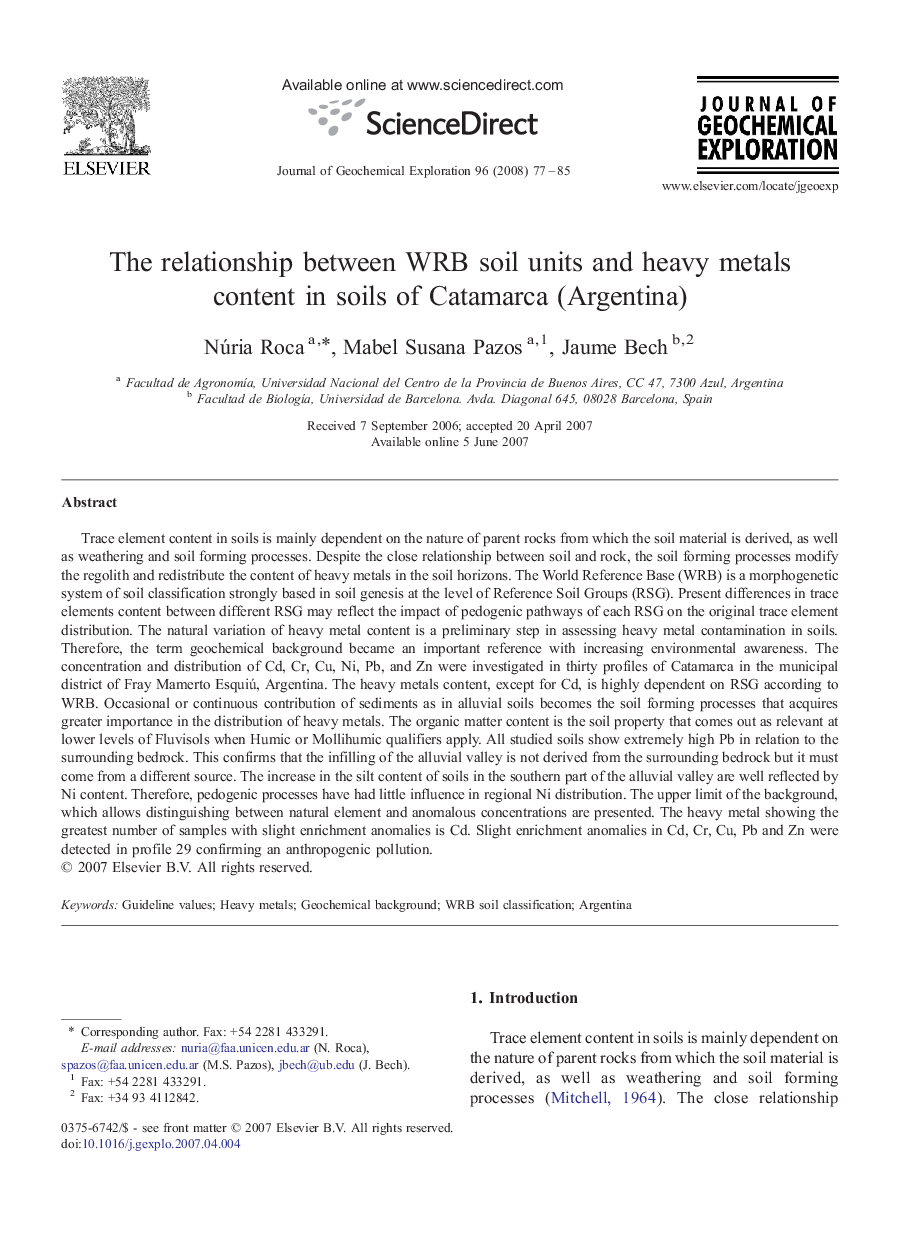| Article ID | Journal | Published Year | Pages | File Type |
|---|---|---|---|---|
| 4458294 | Journal of Geochemical Exploration | 2008 | 9 Pages |
Trace element content in soils is mainly dependent on the nature of parent rocks from which the soil material is derived, as well as weathering and soil forming processes. Despite the close relationship between soil and rock, the soil forming processes modify the regolith and redistribute the content of heavy metals in the soil horizons. The World Reference Base (WRB) is a morphogenetic system of soil classification strongly based in soil genesis at the level of Reference Soil Groups (RSG). Present differences in trace elements content between different RSG may reflect the impact of pedogenic pathways of each RSG on the original trace element distribution. The natural variation of heavy metal content is a preliminary step in assessing heavy metal contamination in soils. Therefore, the term geochemical background became an important reference with increasing environmental awareness. The concentration and distribution of Cd, Cr, Cu, Ni, Pb, and Zn were investigated in thirty profiles of Catamarca in the municipal district of Fray Mamerto Esquiú, Argentina. The heavy metals content, except for Cd, is highly dependent on RSG according to WRB. Occasional or continuous contribution of sediments as in alluvial soils becomes the soil forming processes that acquires greater importance in the distribution of heavy metals. The organic matter content is the soil property that comes out as relevant at lower levels of Fluvisols when Humic or Mollihumic qualifiers apply. All studied soils show extremely high Pb in relation to the surrounding bedrock. This confirms that the infilling of the alluvial valley is not derived from the surrounding bedrock but it must come from a different source. The increase in the silt content of soils in the southern part of the alluvial valley are well reflected by Ni content. Therefore, pedogenic processes have had little influence in regional Ni distribution. The upper limit of the background, which allows distinguishing between natural element and anomalous concentrations are presented. The heavy metal showing the greatest number of samples with slight enrichment anomalies is Cd. Slight enrichment anomalies in Cd, Cr, Cu, Pb and Zn were detected in profile 29 confirming an anthropogenic pollution.
